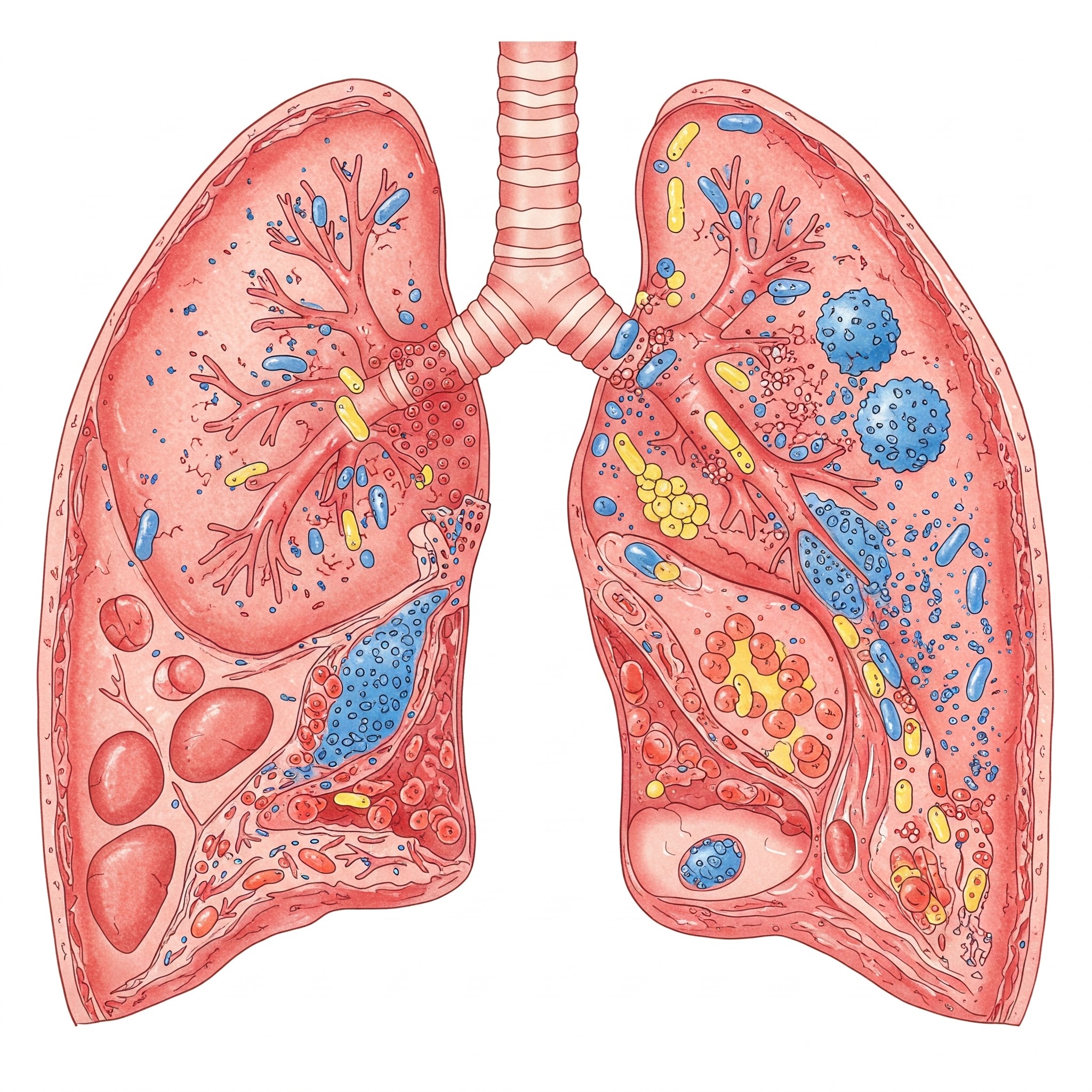Tuberculosis (TB): Types, Facts, Myths & Prevention
- Info
- Apr 15, 2025
- 65 views

Tuberculosis (TB) is a serious infectious disease caused by the bacterium Mycobacterium tuberculosis. While it most commonly affects the lungs (pulmonary TB), it can also impact other parts of the body (extrapulmonary TB). Here's a comprehensive overview of TB, including its types, facts, myths, and prevention strategies:
Types of Tuberculosis:
- Latent TB Infection (LTBI):
- The bacteria are present in the body, but the immune system keeps them under control.
- People with LTBI do not experience symptoms and are not contagious.
- However, LTBI can progress to active TB disease if the immune system weakens.
- Active TB Disease:
- The bacteria multiply and cause symptoms.
- People with active TB disease are contagious and can spread the infection to others.
- Active TB can be further classified:
- Pulmonary TB: Affects the lungs, causing symptoms like a persistent cough, chest pain, and bloody sputum.
- Extrapulmonary TB: Affects organs outside the lungs, such as the lymph nodes, spine, brain, kidneys, and bones.
- Miliary TB: A rare but severe form where the bacteria spread throughout the body.
- Drug-resistant TB: Strains of TB bacteria that are resistant to one or more of the drugs commonly used to treat TB.
Key Facts About TB:
- TB is spread through the air when a person with active pulmonary TB coughs, speaks, or sneezes.
- Not everyone infected with TB bacteria becomes sick.
- TB is treatable with antibiotics, but treatment can take several months.
- Drug-resistant TB poses a significant public health threat.
- People with weakened immune systems, such as those with HIV/AIDS, are at higher risk of developing active TB.
Common Myths About TB:
- Myth: TB is a disease of the past.
- Fact: TB remains a global health problem, affecting millions of people each year.
- Myth: TB only affects the lungs.
- Fact: TB can affect any part of the body.
- Myth: TB is easily spread through casual contact.
- Fact: TB is spread through prolonged close contact with a person who has active pulmonary TB.
- Myth: TB is untreatable.
- Fact: TB is curable with appropriate antibiotic treatment.
Prevention:
- Early Detection and Treatment: Prompt diagnosis and treatment of active TB cases are crucial to prevent the spread of the disease.
- Vaccination: The BCG vaccine is used in some countries to prevent severe forms of TB in children.
- Preventative Therapy: People with LTBI, especially those at high risk of developing active TB, may be given medication to prevent the infection from progressing.
- Infection Control: Hospitals and other healthcare settings should implement infection control measures to prevent the spread of TB.
- Improving Living Conditions: Overcrowding and poor ventilation increase the risk of TB transmission. Improving living conditions can help prevent the disease.
- Strengthening the Immune System: Maintaining a healthy lifestyle, including a balanced diet and regular exercise, can strengthen the immune system and reduce the risk of TB.
It's important to seek medical advice if you experience any symptoms of TB or have been in contact with someone who has the disease.
Related Post
Explore leading pharmaceutical formulation companies in India through Medicef Pharma Insights. Stay informed and elevate your understanding of the market.
Explore the synergy of CO-AMOXICLAV and Lactic Acid Bacillus. Uncover their roles in promoting health and fighting infections effectively.
Discover how beta-lactam antibiotics combat bacterial infections by disrupting cell wall synthesis. Learn about their mechanisms and effectiveness today.
Explore our premium ready-to-compress granules designed for tablet formulation. Achieve optimal results in your production with our innovative materials.
Discover how we ensure quality pharmaceuticals remain affordable, making healthcare accessible for all. Explore our commitment to excellence and value.
Discover the comprehensive guide to Amoxicillin and Clavulanic Acid Sachet BP. Learn about its uses, benefits, and important dosage information for effective treatment.
